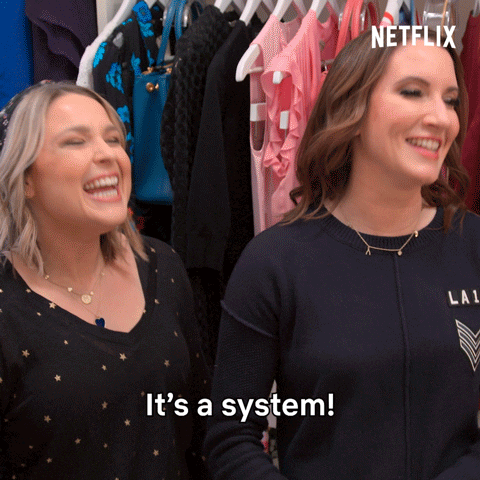Mic Drop #40: Hello Sunshine, Curse of the Mogul & "G"
How Hello Sunshine's creator economy & PARQOR Hypothesis ecosystem may offer some solutions for Disney's current impasse with Scarlett Johansson
There is a good essay, “You Can’t Split The “G”, from The Entertainment Strategy Guy that builds off of my Curse of the Mogul framework.
It’s fun to see someone take a PARQOR framework, and build off of it in a smart direction. It’s one of those things I had quietly hoped for when I started writing.
He frames the Curse of the Mogul in terms of the terminal value growth equation, or “g”, and how studios and streamers are spending billions( and losing cash) each year in hopes of a long-term future growth rate.
How do we calculate what Scarlett Johansson and other talent should be compensated from streaming distribution versus both the capital requirements to grow and the uncertainty of future cash flows for a streaming service?
How do we avoid Curse of the Mogul-type outcomes where talent reaps more value than shareholders from streaming distribution?
Former DTCI Chairman Kevin Mayer told CNBC (~4:30 in) that there are no good answers yet:

Kevin Mayer is also at the heart of another, Curse-of-the-Mogul type scenario to emerge last week: why is Reese Witherspoon’s Hello Sunshine worth $900MM as a production company?
The Information reported that Hello Sunshine only generated:
$65 million in revenue last year, a figure that is expected to double to around $125 million this year. That means Blackstone and its partners are paying about 7.2 times this year’s projected revenue to buy the firm.
The answer is, as Matt Belloni laid out in his (excellent) newsletter yesterday, that it’s not a production company, only:
There’s a reason that Mayer was practically begging interviewers this week not to call Hello Sunshine a “production company.” Shows like Apple’s The Morning Show and movies like Netflix’s upcoming Your Place or Mine are the prestige part (as much as a rom-com with Ashton Kutcher can be called “prestigious”), but they’re work-for-hire jobs, not the true business opportunity. Mayer and Witherspoon prefer “next-generation media company,” which sounds like how Katzenberg described Quibi, but in this context it just means “we do extra stuff”: The book club, and the branding work, and the podcasts, and the e-commerce on social media, and all the products that can be launched in the vein of Witherspoon’s Draper James fashion line (which is separate from this deal). Hello Sunshine might not be particularly dominant in all those categories now, but the foundation is there, Witherspoon and Harden are highly motivated, and with the expertise of two Disney guys and a shit-ton of money, the company can get really good at it and scale.
Meaning, the marketplace’s default reaction was to focus on the production company element and raise Curse of the Mogul-ish red flags around valuation.
But, the marketplace missed how Hello Sunshine’s overall business model, above, is built around Witherspoon’s “particular sensibility” and her mission to empower female creators.
There is nothing Curse of the Mogul-ish about that: each of those business lines beyond the production business is promising growth in 2021 and beyond. Each can be measured by traditional financial, operational, and strategic metrics.
$900MM may seem like creatives reaping (a lot) more value than shareholders, but Mayer’s and Staggs’ bet is on the shareholder value created by Hello Sunshine’s multiple revenue streams, as Mayer told Variety’s Cynthia Littleton:
“You should look to see us have multiple revenue streams beyond licensing and owning content. The great first step is to generate brands and franchises,” Mayer said. “We’re going to leverage that connection for other means” in line with the company’s stated focus on e-commerce transactions and building social communities around artists and brands.
There is both some creator economy business logic and some PARQOR Hypothesis logic lurking in that quote, too.
The Hello Sunshine ecosystem hits three out of five BEADS:
✅ an Aspirational Brand
❌ Existing user base at scale (2MM followers for Reese’s Book Club)
✅ Multiple Avenues to monetizing the same IP, and
❌ Daily value proposition (something new for fans to consume daily)
✅ Sales Channels: Online (digital) and offline (physical) commerce
Mayer and Staggs have up to $2B from Blackstone to roll up similar producers to Hello Sunshine into that business model, and to solve for the two missing pieces (a Daily value proposition, an Existing user base at scale), too.
Their bet is the opposite of the Curse of the Mogul: production companies can be integral to building out bigger, Disney-like ecosystems from which both shareholders and talent can reap value and growth from multiple revenue streams.
Meaning, talent and shareholders have multiple paths to a share of growth in the Hello Sunshine model.
I wonder if the novelty of PVOD revenues and its yet-to-be-measured impact on both streaming and box office revenues may have created too much uncertainty and complication for Disney to calculate “g” for a negotiation today.
The interesting question is whether Disney will resolve its impasse with Ms. Johansson by rethinking the additional revenue streams available to redefine “g”.
In a media marketplace with business models like Hello Sunshine’s increasingly being defined by the creator economy, it may be the forward-thinking option for Disney to pursue.




